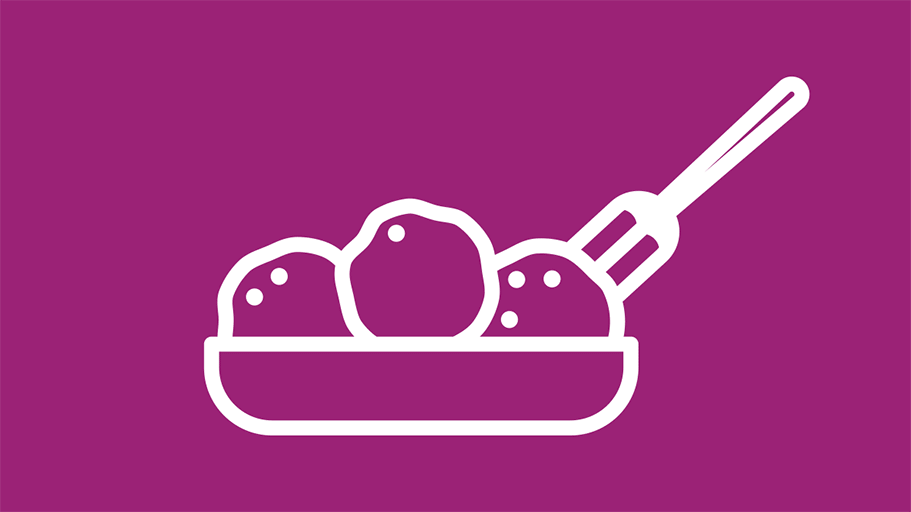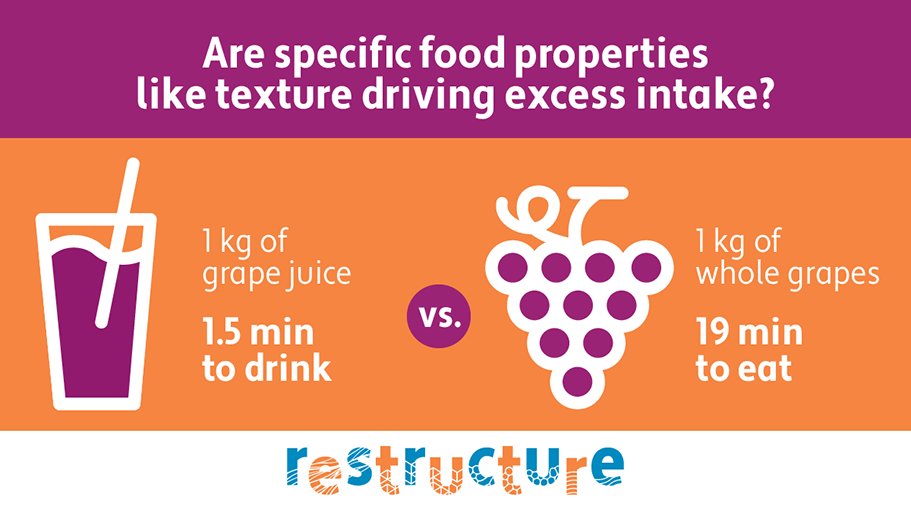RESTRUCTURE - Developing and implementing innovative and evidence-based food design principles to moderate energy intake
Obesity is a leading public health burden of the 21st century. An estimated 2 billion people in the world are affected by overweight or obesity, with the number expected to rise further. Eating more calories than the body needs can lead to weight gain over time. To prevent us from overeating, we start to feel full at a certain point during a meal. But the moment at which our bodies tell us we are full not only depends on the number of calories that have been consumed. Scientists think that certain food properties e.g., food texture can contribute to how satiated (how ‘full’) we feel during a meal, which in turn determines how much we eat. If this holds true, food producers can develop food products in such a way that the food is consumed slower, and people feel full quicker. This may help us to eat fewer calories throughout the day and prevent the development of overweight and obesity. However, the scientific evidence on how changes in texture can lead to reductions in eating rate is still rather nascent.
In this context, RESTRUCTURE, a 4-year project funded through a private-public partnership grant from TKI Agri & Food, aims to further unravel the links between physical properties like food texture, the speed of eating and energy intake with the aim of contributing to the prevention of overweight and obesity and reducing energy intake rate of foods.
The project results will be used to inform food design of rules and tools to help food actors and companies in the development of foods that help limit food intake and prevent overweight and obesity.
Its 11-partner consortium led by Wageningen University & Research (WUR), consists of 3 research partners (WUR, HAS University, EUFIC), a program execution partner (Top Institute Food and Nutrition - TiFN), a public funding partner (Agri&Food) and co-financed by several food companies, brings together the necessary knowledge and expertise in the field of nutrition science, sensory science, communication and dissemination and management crucial to reaching the project’s goals. A fully independent high-level Steering Committee of international experts constituting the main governing body of the project is behind every decision taken and ensures the scientific independence of all research activities.
EUFIC’s role, as the partner responsible for leading the dissemination and communication activities, is to support its partners in the process of translating scientific research into comprehensible and digestible communication material, while ensuring that the results of the project are communicated to relevant stakeholders (industry, scientific community, policy makers, media, and educators). First, EUFIC helped to develop a communication strategy, including a website explaining the science behind the project and a social media outreach plan. In the process, EUFIC worked closely with partners e.g., via face-to-face meetings and regular calls to build consensus on the project’s communication strategy, the brand identity and its approach to reaching and building dialogue with key stakeholders.
The project has received funding from TKI Agri & Food in the Netherlands under grant agreement No. LWV20.221
To maximize the impact and reach of the project’s output, EUFIC ensures that the project goals and results are consistently communicated and targeted to its main target audiences. It is accountable for many of the communication & dissemination tasks, such as:
Communications plan and brand identity – EUFIC developed a communication and dissemination plan for all its partners to follow. It also designed the project’s corporate identity to help partners communicate about the project externally.

The project visual identity constitutes the ‘brand’ of a project and is a core feature of successful communications and awareness-raising. It ensures that the RESTRUCTURE project is externally recognisable for years to come.
The website, which is the main landing page showcasing the science behind the project and study and its governance model. EUFIC manages the updates to communicate the progress of the project to relevant stakeholders.
The RESTRUCTURE website presents the main channel for informing interested stakeholders about the project’s development and results and exchanging knowledge among the scientific community.
External communication & dissemination. Once the results are published, they are communicated to different audiences through social media or via blog updates, often supported by appealing visuals (e.g., infographics and illustrations).

An infographic was developed by EUFIC to help explain a key concept of the project related to food texture i.e., how food type and eating speed may influence how much we consume of the food. The figure shows that the same number of grapes (1 kilogram) is consumed 12 times faster when squeezed into a juice compared to when eaten as whole grapes.
For more information on the project, including the key concepts related to food processing and the RESTRUCTURE study, click here.
- Maria Scherbov, Junior Manager – Collaborative Projects
- Twitter: #RESTRUCTUREproject / @SciFoodHealth